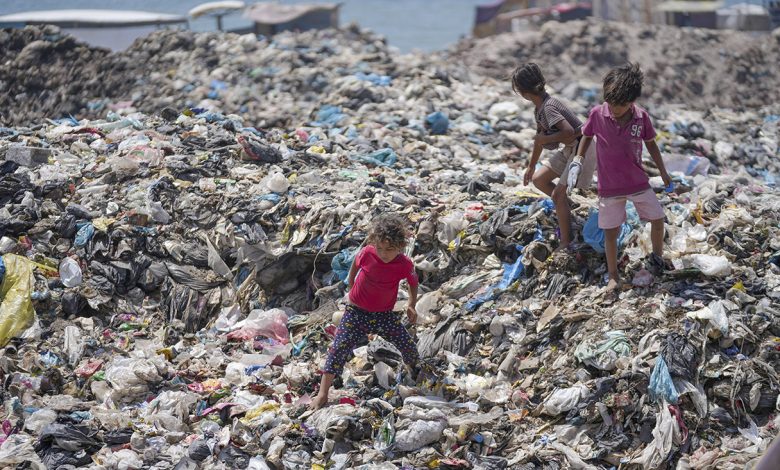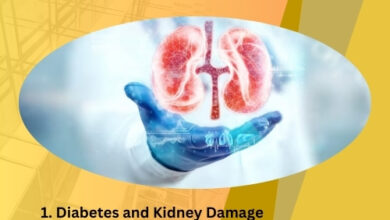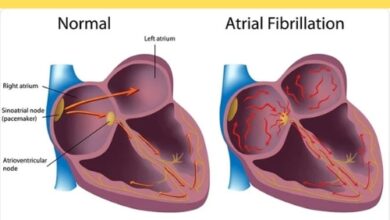The virus that causes polio has been found in Gaza. Here’s why that is grim news

On top of relentless bombings and artillery strikes, mass displacement, the collapse of the health system, and starvation, the children of Gaza now face an additional health disaster: a high risk of paralytic polio.
On 16 July, the Ministry of Health of Gaza announced poliovirus had been detected in six wastewater samples collected in late June at sites in Khan Younis and Deir al-Balah, two governorates of Gaza, an indication that the virus is circulating there.
So far, no cases of paralysis caused by the virus have been reported, but given the chaos in the Gaza Strip, there could well be some that have gone undetected, says Hamid Jafari of the Global Polio Eradication Initiative (GPEI), an international partnership headquartered at the World Health Organization (WHO). Surveillance for all diseases, including polio, has been severely disrupted by the war, says Jafari, who directs polio operations in WHO’s Eastern Mediterranean region. Tens of thousands of children under age 5 are now at risk of contracting polio, and the possibility of international spread beyond Gaza cannot be ruled out, says WHO Spokesperson Christian Lindmeier.
Here’s what to know about the outbreak and the efforts to stop it in its tracks.
How far has the virus spread?
WHO, UNICEF, the United Nations Relief and Works Agency for Palestine Refugees (UNRWA), and Gaza’s Ministry of Health are scrambling to find out. They have launched a risk assessment, including active surveillance to find any paralytic cases that may have been missed. (Only a small fraction of children infected with the poliovirus becomes paralyzed, but the larger the outbreak, the greater the risk that such cases will occur.)
The detections at multiple sites suggest transmission is ongoing and may already be widespread, says WHO’s Aidan O’Leary, director of GPEI. And although all of the isolates are genetically linked, indicating they arose from the same source, there are enough nucleotide differences among them to indicate the virus has been circulating for some time, Jafari says. Genetic sequencing shows they are also closely related to a strain that was circulating in Egypt in the second half of 2023, and that it could have been introduced into Gaza as early as September 2023, according to GPEI.
Why did the virus take off in Gaza now?
The poliovirus is transmitted through the “fecal-oral” route—by contact with the feces of an infected child or consumption of water or food contaminated by fecal matter. The conditions in which the 1.9 million displaced Gazans are living—crammed into unhygienic camps with little access to clean water and sanitation and untreated sewage flowing openly between tents—create an ideal environment for the virus to thrive.
Since the war began in October 2023, 70% of water and sanitation facilities in Gaza have been significantly damaged, and about 340,000 tons of solid waste have accumulated in or near populated areas, according to an estimate from the U.N. Water, Sanitation and Hygiene Cluster. In June, Oxfam estimated there is just one toilet for every 4130 people in Al-Mawasi, a supposed “safe zone” west of Khan Younis that recently came under Israeli attack.
What do we know about the poliovirus circulating in Gaza?
It’s not the wild poliovirus but one spawned by a vaccine. Known as vaccine-derived poliovirus type 2, the virus is every bit as dangerous as the wild virus, however. These variant viruses emerge in areas where vaccination rates are low, allowing the live, weakened virus used in the oral polio vaccine (OPV) to pass from child to child and regain its ability to spread and paralyze.
The type 2 component in OPV was withdrawn from routine immunization globally in 2016, so children in Gaza are not well protected against this strain, even though polio immunization rates in Gaza were “optimal” before October 2023, as WHO Director-General Tedros Adhanom Ghebreyesus posted Friday on the social media platform X. (Since then, routine immunization for all diseases has been badly disrupted.)
What is being done to respond to the outbreak?
The Gaza Ministry of Health has called for “an immediate halt to the Israeli aggression,” saying the presence of the poliovirus is the direct result of “the destruction of infrastructure.” The Israeli government should provide clean water, repair sewer lines, and reduce overcrowding in the camps for the displaced, the ministry said.
Meanwhile, the ministry and its international partners are searching for ways to vaccinate many thousands of children amid an unrelenting war. “Speed and high coverage” with a vaccine specifically targeted against poliovirus type 2 will be essential to stop the outbreak, O’Leary says, and the partners are working furiously on the logistics of getting the vaccine, known as novel OPV2, into the territory quickly.
Is a vaccination campaign even possible while the war rages on?
Reaching the huge number of children who need to be vaccinated will not be possible in areas with active conflict. At a minimum, O’Leary says, children would be vaccinated in camps, shelters, and health facilities that are fully or partially functioning. UNRWA, which is not granting interviews, has a strong presence on the ground, he says, as do some other partners. The Israeli Ministry of Health is participating in discussions about the outbreak response.
“An immediate ceasefire is desirable for hundreds of reasons we know well,” Jafari says. In the meantime, “maybe some ceasefire or ‘days of tranquility’ could be possible when immunization is going on,” he says, perhaps at very specific times and places. But, Jafari concedes, “Maybe I imagine more than is possible in reality, as I am thinking of all those children vulnerable to polio paralysis. I know it will be very, very difficult.”




